S & J Nursery’s guide to Growing Cranberry Hibiscus / African Rose Mallow / False Roselle in the Northeast Florida Garden
(Hibiscus acetosella)
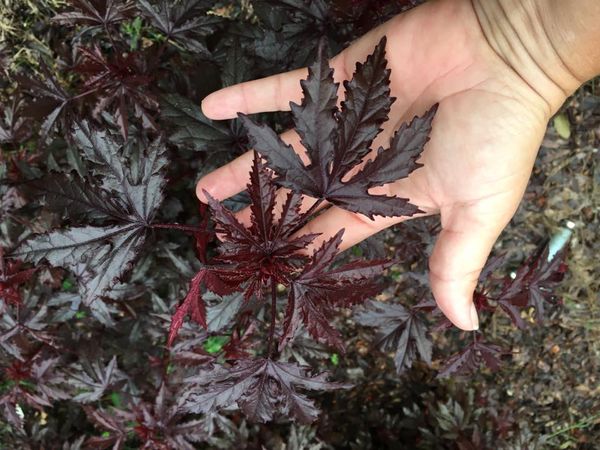
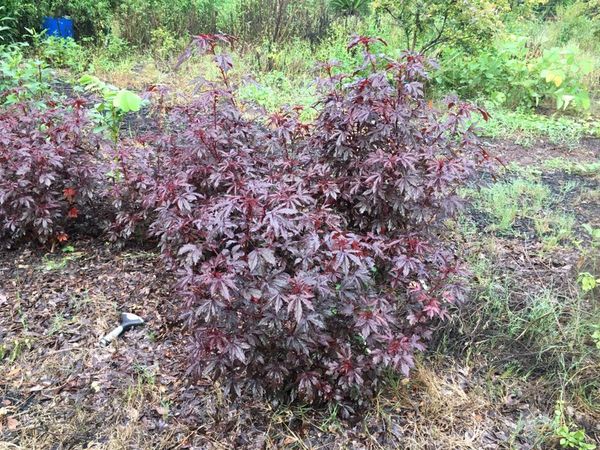
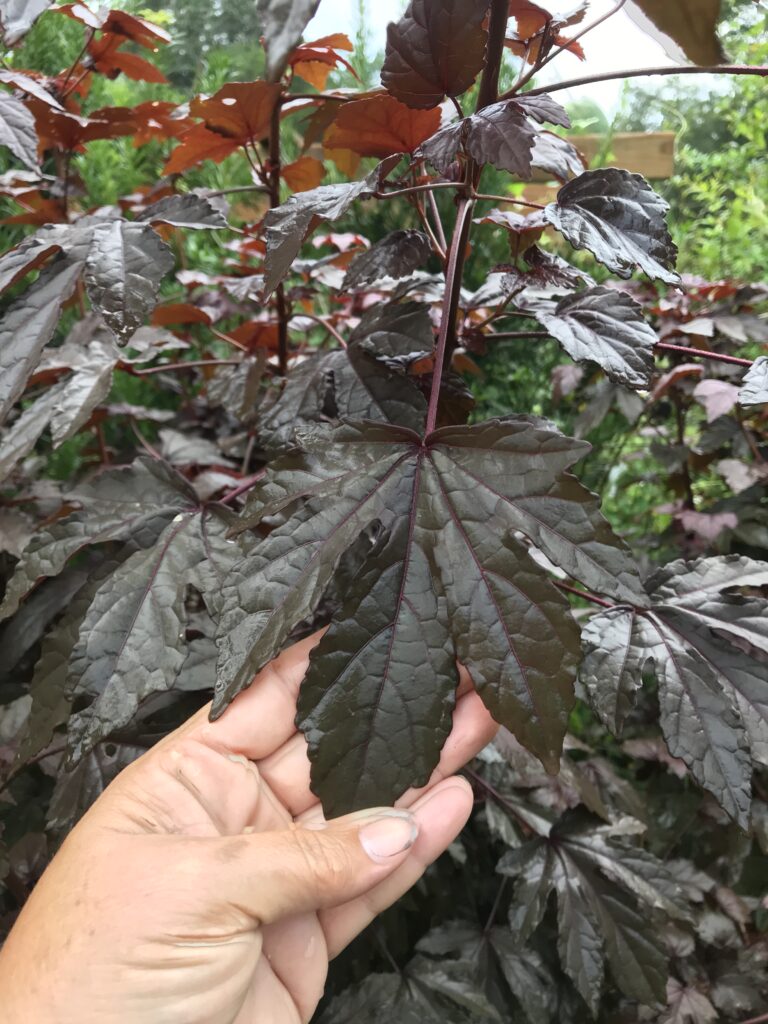
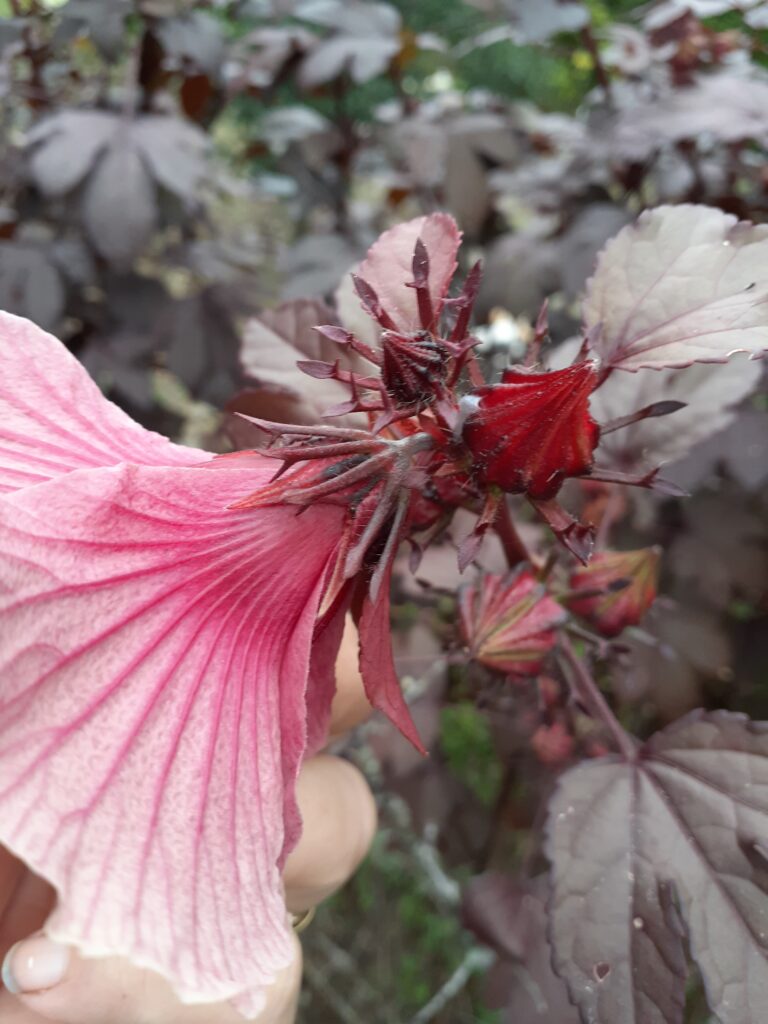
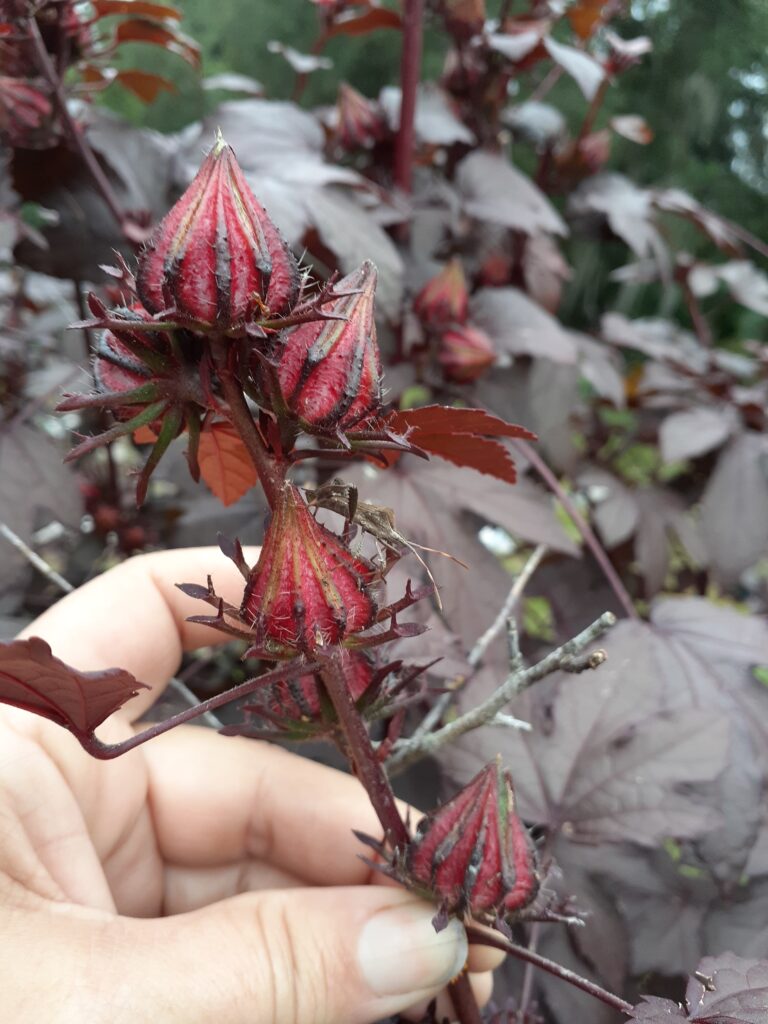
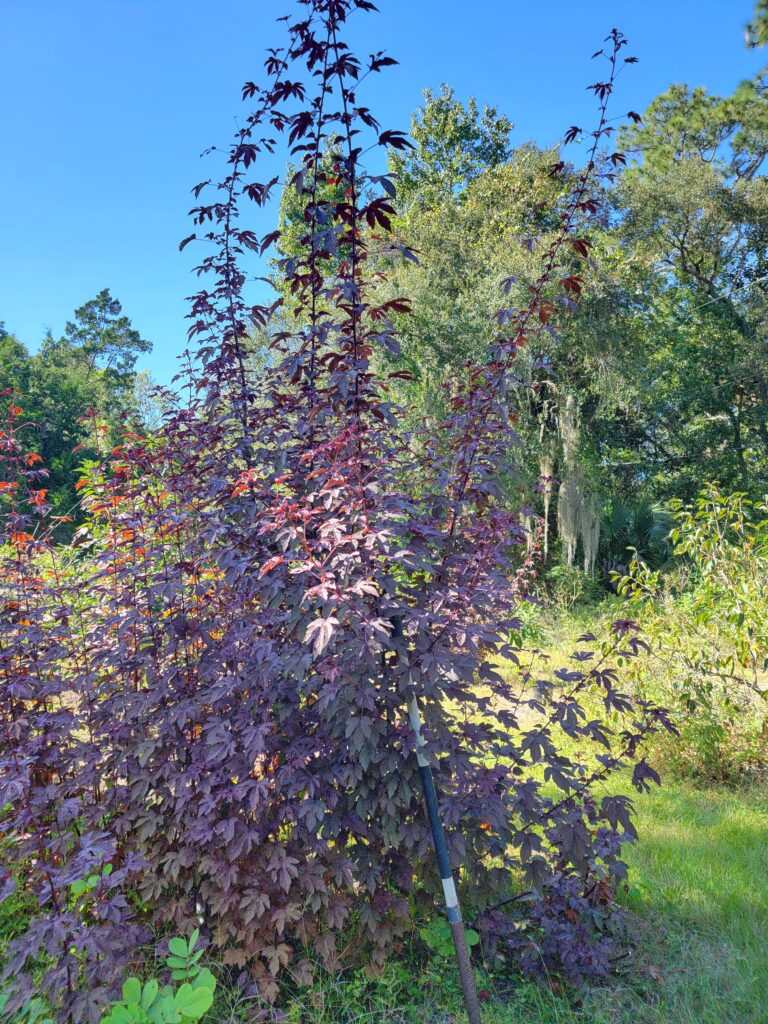
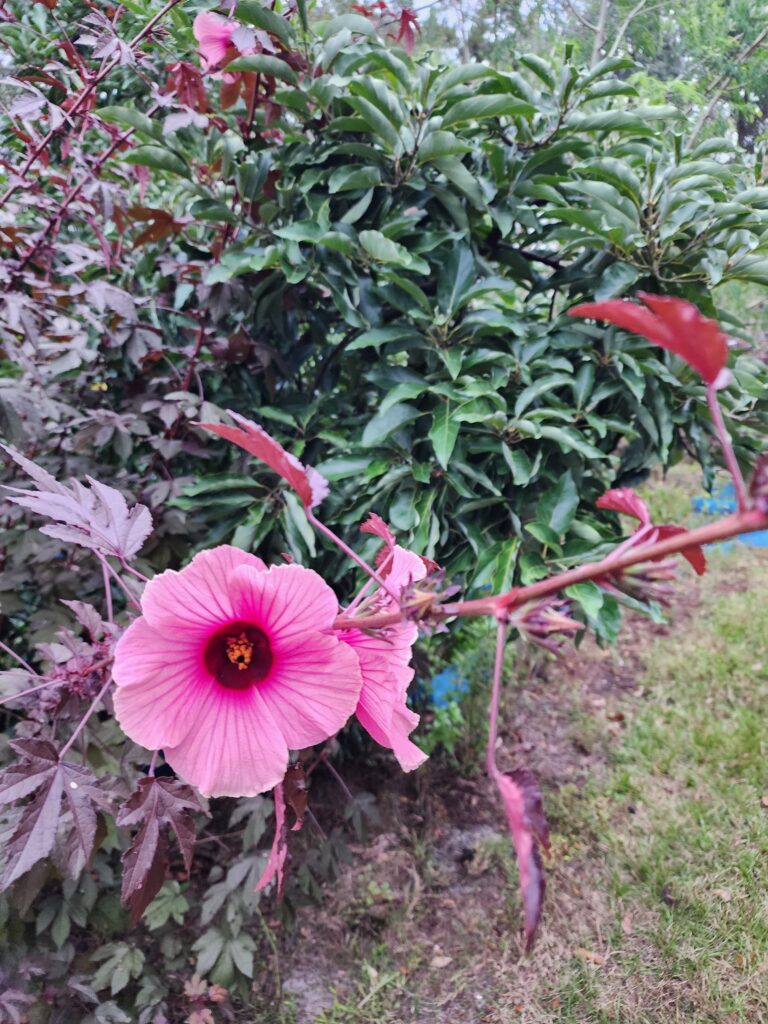
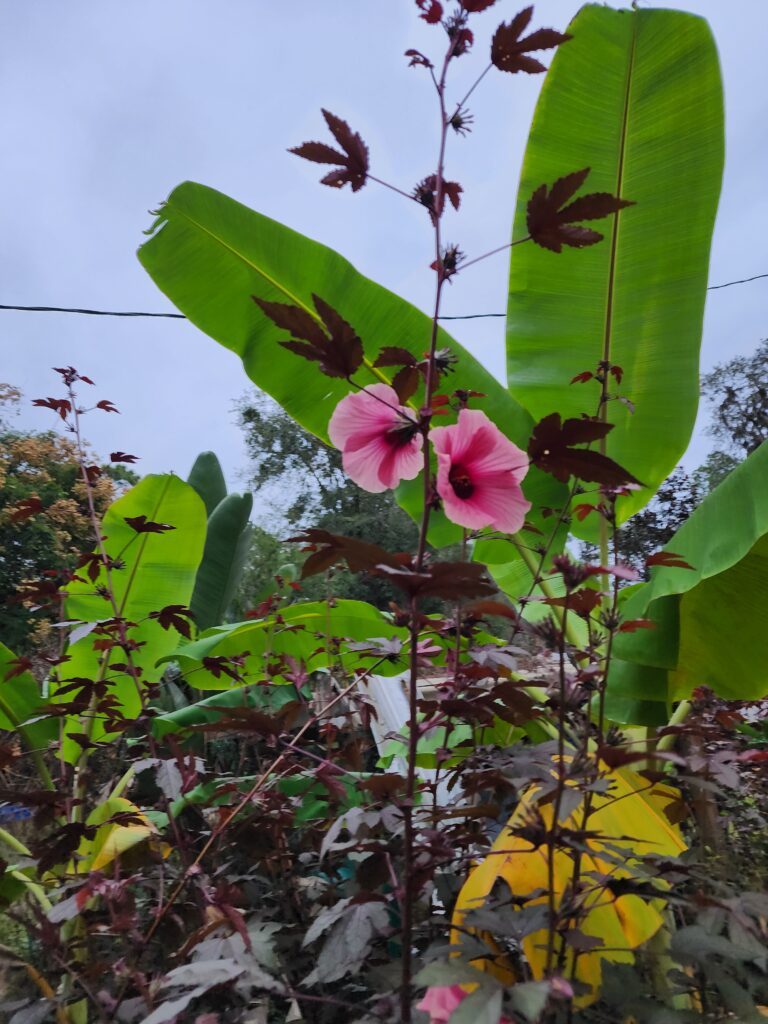
Cranberry Hibiscus ( Hibiscus acetosella) is often mistaken in conversation and confused with Roselle ( Hibiscus sabdariffa which shares a common name of Florida Cranberry. So much confusion abounds between tehm that Cranberry Hibiscus has a commonly adopted name of false Roselle. While they may share some similarities in appearance, taste and even uses, they are still very different plants. They share the same genus of Hibiscus but they are separate species from different parts of the world.
Both are prized plants in my home garden that I have been growing for over a decade and will continue to grow them in my garden every year for as long as I possibly can. And of coarse, I collect every variant strain I run across of both… because I can! I love to add the foliage to salads and soups and sandwiches the color and lemony flavor is a welcome addition.
Origins of Cranberry Hibiscus / Hibiscus acetosella:
The Cranberry Hibiscus is thought to be a naturally occurring cross between two hibiscus species (inter species crosses are considered to be a relatively rare event in nature but seem to happen in the genus Hibiscus) Cranberry Hibiscus is currently thought to be a cross between Hibiscus asper with Hibiscus surattensis. It was most likely first discovered being grown in villages in the Southern Congo – Angolian- Zambia regions of African by the French Botanists in 1896 that gave it the name Hibiscus acetosella. The epithet acetosella is derived from the Latin word for sorrel which shares the sour lemony flavor that you get when you eat the foliage of either plant. It is now widely cultivated around the world and its ease of cultivation and lemony flavored foliage has in its past made it a useful food supply source for humans and livestock.
Interestingly, the roots of Hibiscus acetosella have genetic resistance to root-knot nematodes and can be planted after susceptible species like tomatoes or potatoes.
Planting Season for Cranberry Hibiscus in Jacksonville & St. Augustine Florida and the surrounding areas:
Plant the seeds as soon as the soil warms in spring. Mid February is when I start my seeds and cuttings can be taken in summer. Plants from containers can be planted in spring or summer and will establish quickly into the landscape. Cranberry Hibiscus is a perennial in warmer region areas and annual in colder climate zones. Mine for the most part seem to remain in the landscape for a few years before a winter cold takes them all out here in the St. Augustine area but some varietal selections seem to be more cold sensitive than others. For instance, I have yet to get the more heavily cut leaf ‘Red Shield’ variant to overwinter a single time unprotected in my home garden. While the larger maple leaf red with a rose colored bloom will last 3-5 years and sometimes suffer no winter damage at all. The foliage is hardy to near 30 °F. I also grow and sell an orange tinged leaf cultivar with deep red blooms that is pretty reliably perennial here for me as well.
Sun Exposure for Growing Cranberry Hibiscus / Hibiscus acetosella :
Plants can be placed in full sun, or morning sun with afternoon shade, and morning shade with afternoon sun areas of the landscape in our Northeast Florida garden. Plants located into a sunnier location in the garden will generally have deeper color to the foliage in the same variety, the shaded or partially shaded plants will have color but have a bit more green to the leaf. And of coarse, each variety has its own range of shading of red leaves, some varieties are a bit darker than others.
Soil Preferences for Cranberry Hibiscus / Hibiscus acetosella in the Jacksonville and St. Augustine Florida landscapes:
Cranberry hibiscus is tolerant of a wide range of soil components and conditions evidenced by the many countries across the globe where these beautiful plants are grown in subtropical and tropical regions. Hibiscus acetosella is easy to grow, easy to propagate by seed or by cutting and the reward you get for growing it is my favorite part! Not only are they a beautiful addition to the landscape with leaves that can rival the beauty of a Japanese Maple trees, but they taste delicious! What more can you ask for in a plant?
Care of False Roselle / Cranberry Hibiscus / Hibiscus acetosella in the Northeast Florida Landscape:
Watering Your Florida Cranberry:
Newly planted seeds or containerized plants will require daily watering for a week or two to get the plant established and growing in the garden. Once the plants are established and growing, they will require very little in the way of care from you. Remember to water at least once to twice a week in times of drought or if our local rainfall levels are low.
Mulching Your Plants:
For maximum growth potential, mulch plants generously – this will help conserve moisture during our hot summer months and keep your plants growing quickly.
Fertilizing Your Cranberry Hibiscus:
I leave mine to grow with just the compost amendment at planting time and an occasional summer feeding of a manure based fertilizer like fish emulsions or ‘Coop Grow’. These fast growing plants will benefit from additional nutrients being added to the soil and like other heavily flowering or fruiting plants, can quickly use up available nutrition in sandy soil gardens.
If you find for some reason your plants are in need of a little additional help, try an organic approach. Fertilize with a mixture of fish emulsions and seaweed (kelp) at one ounce each per gallon of water. Apply semi weekly as a foliar spray. You could also try giving them a good watering with homemade compost tea as soon as the top few inches of soil around your plant is dry to the touch!
Pruning Your Cranberry Hibiscus Plants:
Pruning your Cranberry Hibiscus / False Roselle frequently during the summer months is critical to their surviving our summer rainstorms. The fast growing plants can add several feet to their height in a single month during summertime and tend towards a narrow columnar upright growth habit with a thinner foliage or “leggy” appearance of exposed stems if not tipped back frequently to encourage side branching and bushy new foliage growth. The fast growing stems snap easily in storms and I try to keep mine under 4 ft during summer and stop trimming them in late August, just in time for them to do their beautiful fall display of blooms. The blooms and Calyx of the Cranberry Hibiscus / False Roselle are also edible and sometimes used to make tea and they like the foliage have a lemony flavor but a bit more floral than the foliage. I prefer the foliage and leave the flowers to look at and make more seeds!
Harvesting Your Hibiscus acetosella Foliage and Flowers in the Northeast Florida Vegetable Garden:
Your Cranberry Hibiscus leaves can begin being harvested as soon as they appear. Harvest and utilize the leaves on the stems you trimmed off during your summer pruning in salads soups or sandwiches or dehydrate for use later down the road. Flowers are 5 petaled, rose pink to maroon or burgundy with burgundy veins depending on the cultivar, 2 inches across and 2 inches deep and will start appearing in the fall usually around September – October here in the Northeast Florida area and can be picked and utilized fresh or dried. The calyx or sepals of the Hibiscus acetosella are non fleshy and are not eaten.

